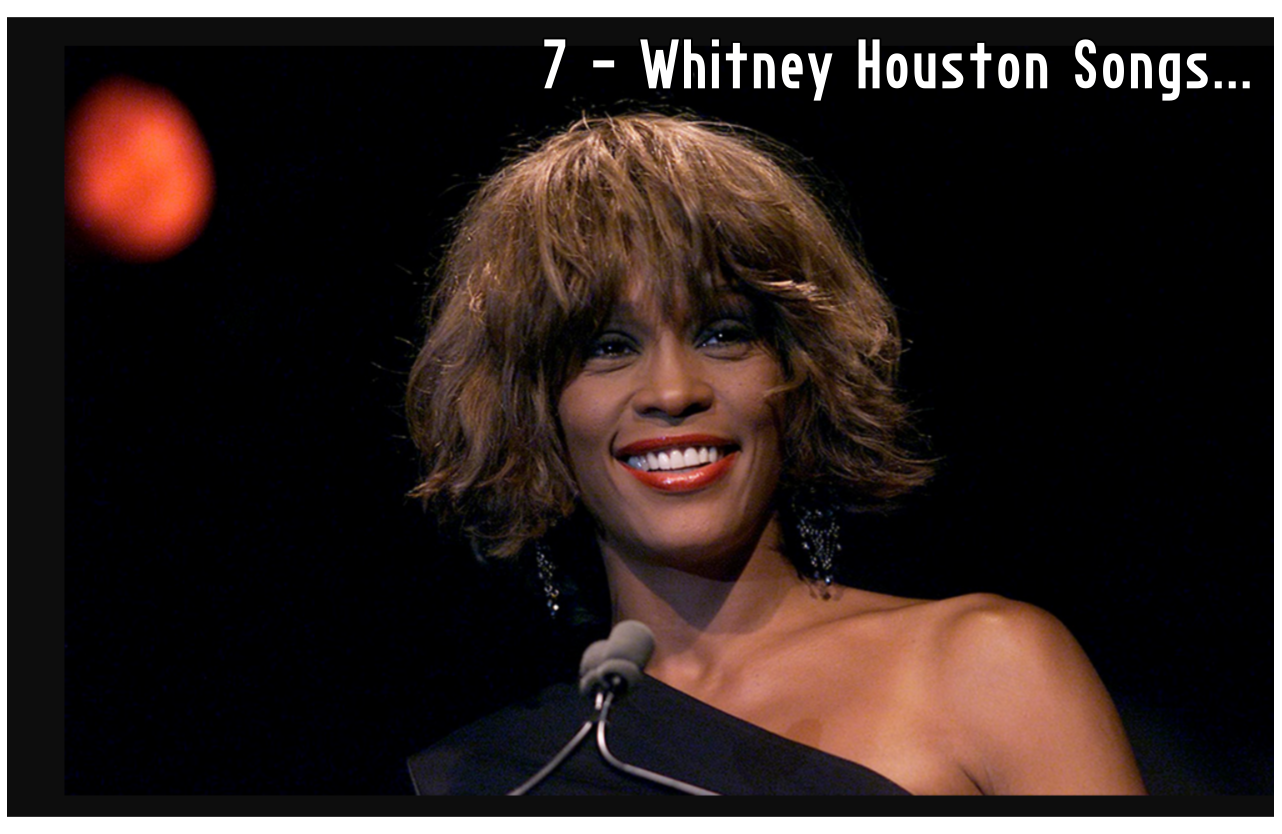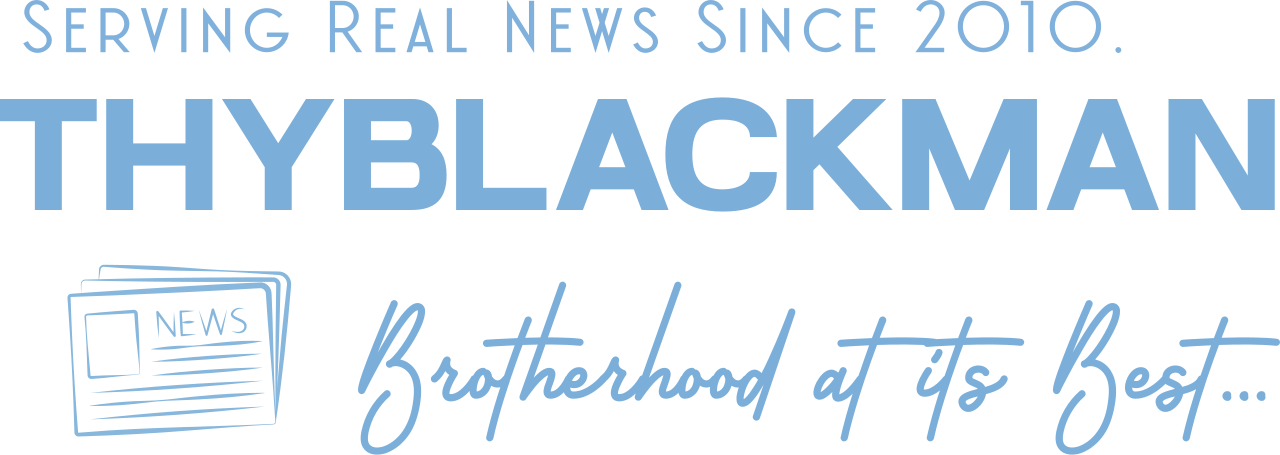(ThyBlackMan.com) Whitney Houston’s voice is one of the most iconic instruments in music history—flawless in tone, rich in emotion, and capable of making even the simplest lyric feel profound. While her biggest hits dominate the airwaves and playlists, there’s another side to Whitney that often gets overlooked: the storyteller, the soul singer, the interpreter of quiet heartbreaks and subtle joys.
Tucked deep within her albums are tracks that never got the spotlight but reveal just how versatile and musically gifted she truly was. These songs may not have topped the charts, but they showcase her mastery of phrasing, her gospel roots, her playful spirit, and her emotional range. They’re the moments where Whitney wasn’t trying to impress—she was just being herself.
If you’ve only scratched the surface of her discography, it’s time to go deeper. These lesser-known tracks are where Whitney’s artistry really shines, proving that even outside the spotlight, her voice remained unforgettable.

1. “All at Once”
“All at Once” is one of Whitney Houston’s most haunting early ballads, delicately built on the quiet devastation of unexpected heartbreak. The lyrics speak from the perspective of someone blindsided by a breakup—there’s no buildup, no farewell, just absence. Whitney captures this emotional whiplash with masterful restraint in the opening verses. Unlike the grand showstoppers that followed later in her career, “All at Once” thrives on silence, pauses, and vulnerability.
Written by Michael Masser and Jeffrey Osborne, the track allows Whitney to explore the subtleties of loss rather than belt out her pain. Her voice is airy yet grounded, carrying a tone of disbelief. The way she gradually ascends to emotional peaks mirrors how heartbreak often unfolds—soft confusion turning into overwhelming realization. And when she hits the chorus, her vocal climb becomes a cathartic release: she lets us hear the very moment grief takes hold.
The arrangement is equally brilliant in its simplicity. A bed of strings, minimal percussion, and gentle piano provide a tender backdrop. It’s the kind of ballad that doesn’t beg for your attention—it deserves it. Even in its most dramatic moments, the instrumentation never competes with the vocals. This production choice makes the song feel raw, almost as if you’re intruding on a private conversation between Whitney and her shattered heart.
What cements “All at Once” as a must-listen today is how real it still feels. In a digital era where heartbreak is sometimes reduced to cryptic captions or 15-second TikTok rants, this song reminds us what it’s like to sit fully in that moment of emotional destruction. “All at Once” offers no solutions, just emotional truth—and that’s more than enough.
2. “Where You Are”
“Where You Are” is one of Whitney Houston’s most serene and underrated ballads, showcasing her ability to do more with less. Instead of relying on vocal gymnastics, Whitney leans into her lower register, allowing a gentle, unhurried melody to express the longing in the lyrics. This song is not about heartbreak, but about the ache of distance—the yearning to be close to someone when circumstances won’t allow it.
From the opening chords, you’re enveloped in a warm, atmospheric soundscape. The track opens with subtle synths and delicate keyboard flourishes, creating an almost dreamlike effect. Whitney sings with softness, yet every note is deliberate. Her voice doesn’t cry out for the lover she misses—it reaches for them. There’s a difference, and she makes it palpable.
What makes this track so impressive is how Houston uses texture in her vocals. The way she caresses each line and layers harmonies over herself gives the impression of multiple emotional dimensions—hope, sadness, tenderness, and devotion all at once. It’s almost like she’s whispering a secret lullaby across time and space. The result is a sonic intimacy few artists can deliver.
In today’s landscape of lo-fi R&B and stripped-back soul, “Where You Are” feels surprisingly modern. You can easily imagine someone like Snoh Aalegra or Jazmine Sullivan recording a similar track today. It’s a testament to how Whitney’s musical instincts were ahead of her time, blending technical precision with emotional subtlety. It’s not a showstopper—it’s a soul-soother.
3. “Just the Lonely Talking Again”
A gem penned by the legendary Curtis Mayfield, “Just the Lonely Talking Again” offers a softer, jazz-infused side of Whitney Houston that many casual fans never got to hear. This track plays like a quiet confession at 2 a.m.—it’s about the lies we whisper to ourselves when we’re alone, clinging to the idea of love that no longer exists. The honesty is breathtaking.
The production is warm and velvety, with a hint of vintage soul. Whitney delivers the lyrics not with her usual grandiosity but with hushed wisdom, almost like she’s reading from an old diary. She doesn’t oversell the sentiment. Instead, she gently unfolds each line, allowing the emotional weight to rest lightly but meaningfully on the listener’s shoulders.
Her vocal control is extraordinary here. She dips into her lower register with grace, allowing her breathy tones to convey more than words ever could. There’s a slight tremble in her phrasing that communicates a heart trying to convince itself of something it doesn’t believe. “I know it’s only… the lonely talking again,” she sings, as if trying to hush the ache in her chest.
This song serves as a bridge between traditional R&B and jazz balladry. It showcases Whitney’s ability to interpret a song with the nuance of a jazz vocalist—never overpowering, always in conversation with the lyrics. In an age where belting often overshadows storytelling, “Just the Lonely Talking Again” reminds us that true vocal mastery lies in knowing when not to sing at full volume.
It’s the kind of song that pairs perfectly with rainy nights, candlelight, and self-reflection. If you’re someone who values mood music with lyrical substance, this one’s a must for your late-night playlist.
4. “Miracle”
“Miracle” is one of the most emotionally layered tracks in Whitney Houston’s discography. While it enjoyed modest chart success, it never received the widespread acclaim it deserved. That’s unfortunate, because it’s one of the few mainstream ballads that dares to dive into deeper themes like regret, morality, and personal responsibility. It’s a rare pop song that encourages introspection without moralizing.
From the opening bars, “Miracle” sets a somber tone. There’s a quiet sadness in the piano line, and the arrangement slowly builds, mirroring the unfolding complexity of the narrative. Whitney’s voice is restrained at first, almost gentle, like someone afraid of confronting a painful truth. As the chorus approaches, she allows herself to open up—but not too much. It’s as though she’s still holding back tears.
The lyrics are ambiguous but deeply stirring. Phrases like “Did you ever lose something you couldn’t replace?” and “You were the air I would breathe” suggest profound loss, possibly even dealing with themes like abortion or miscarriage—though the song never confirms it explicitly. This lyrical opacity gives the song emotional depth and room for individual interpretation, which makes it all the more haunting.
What makes “Miracle” remarkable is how it uses restraint as its emotional engine. Whitney’s control here is second to none—each note is measured, each breath intentional. She delivers the chorus with heartbreaking sincerity, but never slips into melodrama. That discipline allows the listener to fully absorb the sorrow embedded in the lyrics.
In 2025, “Miracle” still feels daring. It doesn’t rely on trendy production or vocal theatrics—it relies on truth, and truth never goes out of style. For those who want their music to mean something, “Miracle” remains a soul-stirring listen, deserving far more recognition than it has received.
5. “Anymore”
“Anymore” is one of those underrated mid-tempo R&B gems that allowed Whitney Houston to flex a different kind of vocal muscle—grit. She wasn’t trying to soar into the heavens with this one; she was standing firm, emotionally grounded, and done with taking nonsense. With songwriting and production from the powerhouse duo L.A. Reid and Babyface, “Anymore” reflects the early ’90s shift in R&B toward more assertive, beat-driven narratives.
The lyrical message is clear from the outset: the woman in this relationship is tired—mentally, emotionally, and spiritually. Whitney’s opening lines are deceptively soft, but by the time she hits the chorus, her voice sharpens like a blade. “I don’t want to hurt anymore,” she sings, not as a plea but as a final declaration. She’s not asking for better—she’s leaving for better. This moment of defiance was a bold contrast to the fairy-tale love songs that dominated much of her earlier catalog.
The musical arrangement is dynamic, built on a bed of tight percussion, echoing snares, and a pulsing bass line. The harmonies are lush, with Whitney’s layered background vocals offering commentary that feels like a chorus of inner voices pushing her toward liberation. There’s also a noticeable swing to the production—it bounces with quiet fury, a sonic representation of a woman walking out the door with dignity.
Today, “Anymore” could easily be seen as a precursor to the wave of empowerment anthems led by artists like Mary J. Blige or Jazmine Sullivan. It’s still incredibly relevant in the context of relationships that demand too much and offer too little. Whitney, here, is not a victim but a survivor reclaiming her peace. In a culture that now praises boundary-setting and self-worth, “Anymore” feels timeless—like a conversation many of us are still having.
6. “My Heart Is Calling”
“My Heart Is Calling” is Whitney Houston at her most relaxed, most spiritual, and arguably, most seductive. It’s a track that lives in the spaces between soul and gospel, love and longing, heaven and earth. Written by Babyface for The Preacher’s Wife soundtrack—a project known for its deep gospel influences—this track stands out as a shimmering moment of crossover brilliance, where sensuality meets sacredness.
From the moment the song begins, there’s a warmth in the production that feels like slipping into a bath of sound. The arrangement is delicate, led by understated organ chords, subtle electric guitar licks, and ambient backing harmonies that feel like a gentle breeze. Babyface, as usual, knows how to leave space for the vocal to breathe—and Whitney breathes life into every single phrase.
She doesn’t sing this like a diva—it’s far more intimate. Whitney sounds like she’s singing to someone, not for an audience. There’s a smile in her phrasing, a warmth in the corners of her tone. Her voice has a lived-in quality here, one that exudes confidence, grace, and affection. This isn’t just about romantic attraction—it’s about spiritual alignment. “My heart is calling,” she sings, and it’s not clear whether she’s calling out to a lover or to God. The beauty is—it could be both.
What makes the track so impactful today is that it doesn’t feel dated. The genre fusion still feels fresh, and the message remains deeply relevant. In an era of genre-blending where artists like Leon Bridges, H.E.R., and even Beyoncé (in her Renaissance and Cowboy Carter eras) are unafraid to meld sacred and secular, “My Heart Is Calling” fits right in. It’s the kind of song that plays perfectly during a quiet moment of gratitude or a candlelit night in with someone you love.
7. “I Was Made to Love Him”
Whitney Houston’s cover of Stevie Wonder’s “I Was Made to Love Her”—retitled “I Was Made to Love Him” for her version—is a jubilant, soulful romp that reminds us just how deep her musical roots ran. Though it didn’t get the shine it deserved during her chart-dominating years, the track found a home on her Greatest Hits collection, giving fans a glimpse of Whitney in her raw, soulful glory.
From the downbeat, this rendition bursts with energy. The horn section is lively, the rhythm guitar has a bounce, and the drums keep things tight and funky. Whitney doesn’t approach this track like a cover—she claims it. Her phrasing is looser, more improvisational than usual, suggesting she recorded it more for the love of it than for radio play. And that’s precisely what makes it such a joy.
Vocally, Whitney is in playful mode. She scats, growls, and swoops through the melody with a contagious sense of fun. You can feel the church in her delivery—this is Whitney the choirgirl, Whitney the soul singer, Whitney who probably heard this song as a child and internalized its groove before she ever set foot in a studio. Her ad-libs in the final minute are electric—flashes of a vocalist fully in command, letting her instrument do the talking without restraint.
What’s striking about this track today is how free it sounds. In an era where music is often tightly produced and vocally sanitized, “I Was Made to Love Him” feels like a jam session. It’s a reminder that Whitney didn’t just sing notes—she inhabited songs. The rawness, the soul, the joy of singing is all over this track.
For fans used to hearing Whitney in ballad mode, this is an eye-opener. It proves she wasn’t just a polished pop princess—she could get funky, get gritty, and still keep it 100% Whitney. It’s a perfect track to rediscover if you want to hear her let go and just groove.
Revisiting these songs is like pulling out a well-worn vinyl—familiar yet fresh, comforting but full of discovery. In these deeper cuts, Whitney isn’t just performing for stadiums—she’s singing directly to you. Whether she’s breaking free from a toxic love, fusing R&B with gospel intimacy, or grooving through a Stevie Wonder classic with joyful abandon, each track reminds us of her unmatched musical instincts.
Whitney Houston didn’t need a spotlight to shine—give her a melody, a mic, and some soul, and she gave the world something timeless. So the next time you’re building a playlist or just in the mood to hear something real, skip the greatest hits and lean into the tracks that showcase Whitney at her most personal and musically profound.
You’ll be glad you did.

















Thank you so much! I hope you enjoy rediscovering these gems. And yes — ‘I Believe in You and Me’ is such a beautiful addition. Great choice!
Thank you so much for this! I can’t wait to check out some of these hidden gems that I somehow missed. If this was my list, I would have added “I believe in you and me” as well. : )
Thank you so much! I hope you enjoy rediscovering these gems. And yes — ‘I Believe in You and Me’ is such a beautiful addition. Great choice!